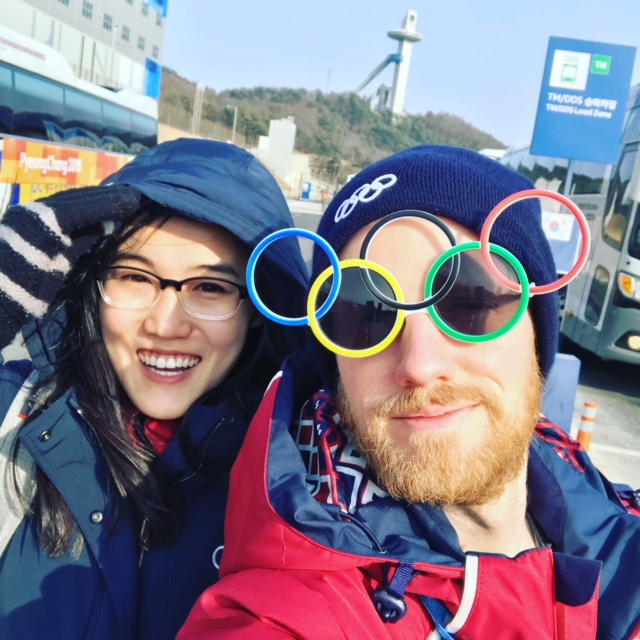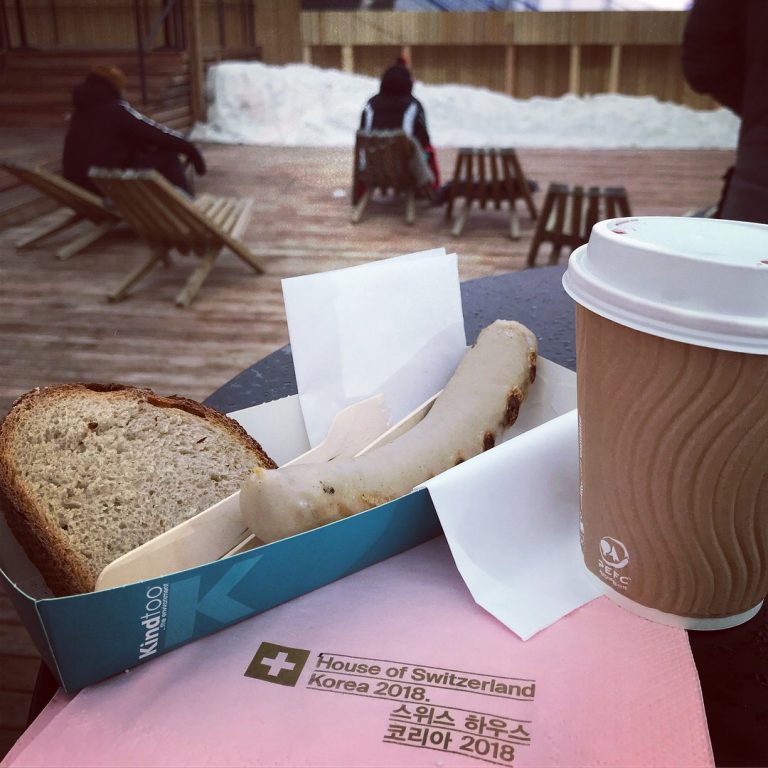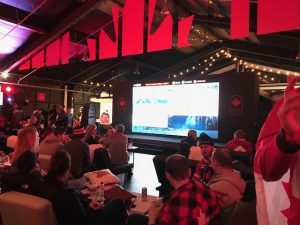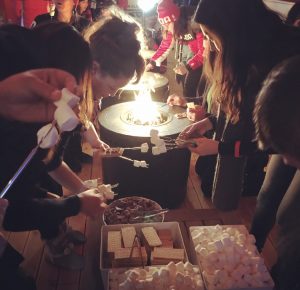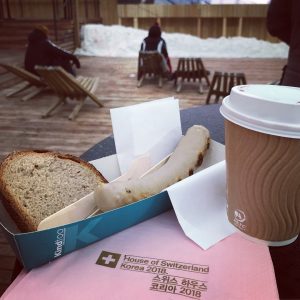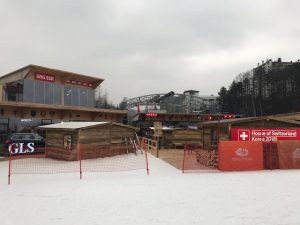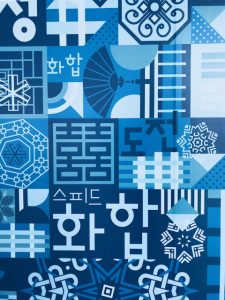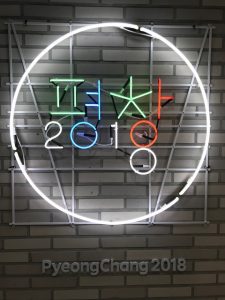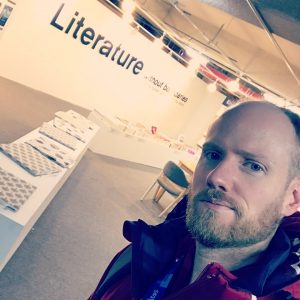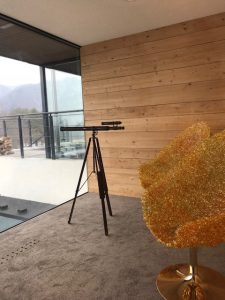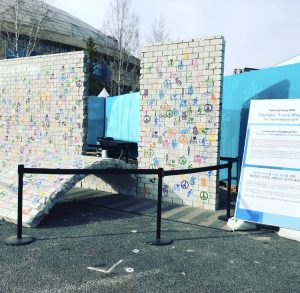In between all of the cultural activities and work shifts, the entire event is of course about sports and celebrating athletes’ accomplishments. While working at the Olympic Sliding Center, I learned about different sports and saw them in action first hand. For example, the skeleton uses a sled and the athlete lies their stomach, head first; not sure if this is a sport I’m ready to try out myself. But, I’m really hoping they have cameras in the helmets so the images can be mapped to 3D tech. It would be cool to feel like I’m head first on the skeleton track, going for a run, without actually risking injury to my head!
Olympic Reflection: Olympic Team Houses
Many Olympic Teams (mostly from Europe) create hospitality houses at the Games, which are open to the public. I had the opportunity to visit several, including the Swiss House and Canada House. It was a great opportunity to meet folks and try food from another country – all without needing to leave Korea! I grabbed lunch at the Swiss house in their outdoor village and watched a competition with others on the big outdoor TV screen. I will admit, I never would have considered lounging outside in the cold until the Swiss introduced me to its many perks.
In another area of the city, I visited the Canada House, luckily on s’mores night! It was an interesting experience to partake in a familiar activity provided by different country. Perhaps this event reminded my peers and I that folks from different countries can share common cultural bonds, even if it is not apparent at first. While roasting marshmallows at Canada House, we began chatting with a few Canadians, sharing origin stories, our roles at the Olympics, and how the Games can be improved moving forward. Sugar ended up serving as a mechanism to facilitate discussion with new friends and make new memories; noted for all of life’s future challenges.
For more info about the various nation houses, check out this link:
https://medium.com/road-to-pyeongchang/olympic-hospitality-house-list-pyeongchang-ultimate-guide-to-pyeongchang-2018-cee00632a2c3
Olympic Reflection: Language, Culture, and Design
For the 2018 Games, the Koreans chose to incorporate one of their most valuable assets into every aspect of the Games’ design: Hangul (the Korean alphabet). Hangul is largely regarded as one of the best writing systems in the world because it is so logical and concise. One can see elements of Hangul in the logo for the Games as well as all the promotional banners. Throughout my adventures at the Games, whenever I saw a 2018 Olympic banner, it was a reminder this was Korea’s opportunity to share their culture with the world.
CASA Italia
On a side note, several of the nation houses incorporated unique elements of the Korean host country into their design. However, Casa Italia probably did it the best. Throughout the house, one could see elements of the Korean language posted in neon signs, which provided guests an opportunity to reflect on their current location while enjoying Italian culture. One of my favorite signs is in the pic below: a neon yellow sign, written in Korean, hags on a wall inside the espresso bar inside Casa Italia. In English, the sign translates to 'who are you?' I personally thought this was really cool and clever. But, truth be told, I was too exhausted to really engage in any philosophical discussions of self.
Olympic Reflection: The Olympic Spirit
The modern Olympic Games were founded by Pierre de Coubertin, a Frenchman, and the first edition of the Games were familiar with today was held in Athens in 1896. Coubertin believed sport could unite the nations of the world. Thus, he believed the Games could be used as a platform to promote peace and resolve conflicts. Coubertin’s philosophy still can be seen in various forms at the Games today.
The 2018 Olympic Truce Mural in the Olympic Village is yet another symbol that embodies Coubertin’s values. The mural represents the Ancient Greek tradition to ask athletes set aside their differences during the Games and compete peacefully. Athletes were asked to reaffirm their commitment to these ideals by signing the wall. To have the mural present at the 2018 Games just seemed very fitting – especially given that the Korean peninsula put aside their differences for the Games and marched as a united country at the Opening Ceremony.

